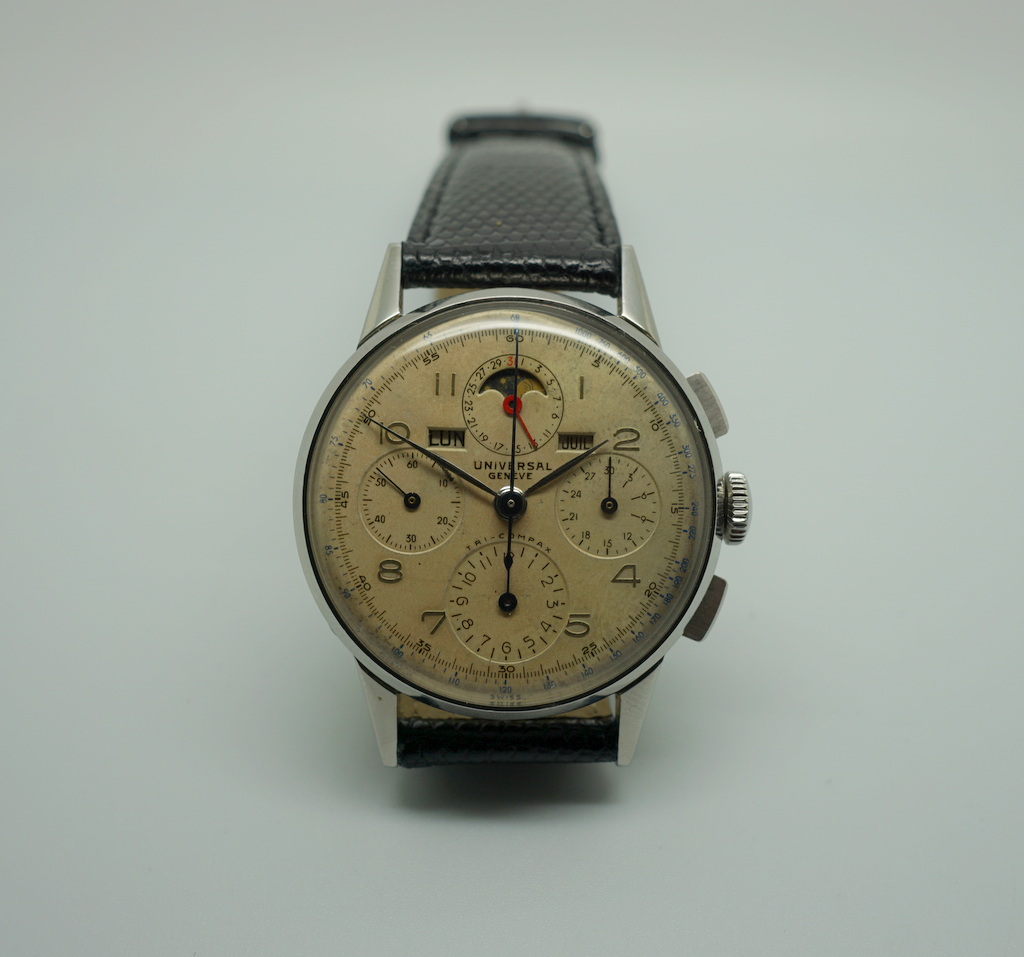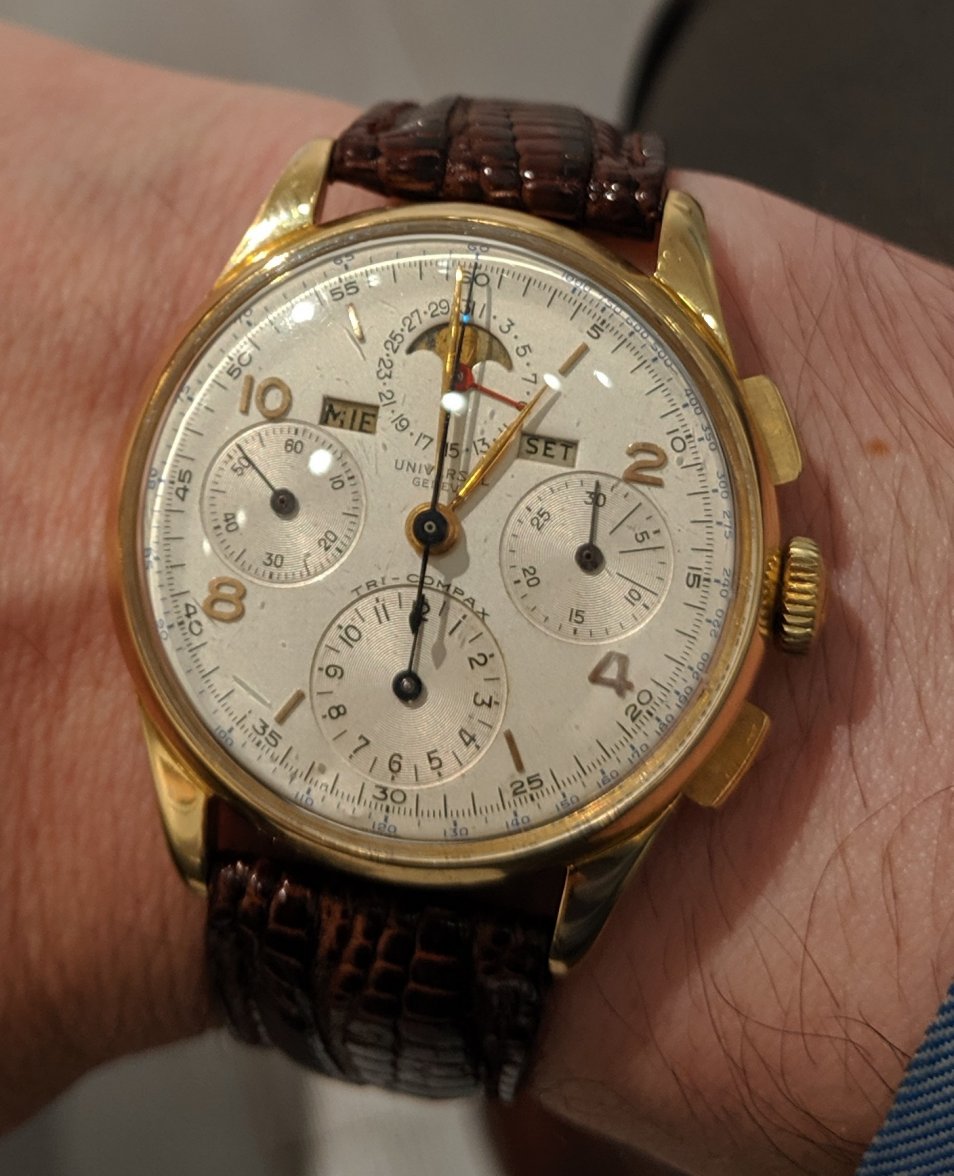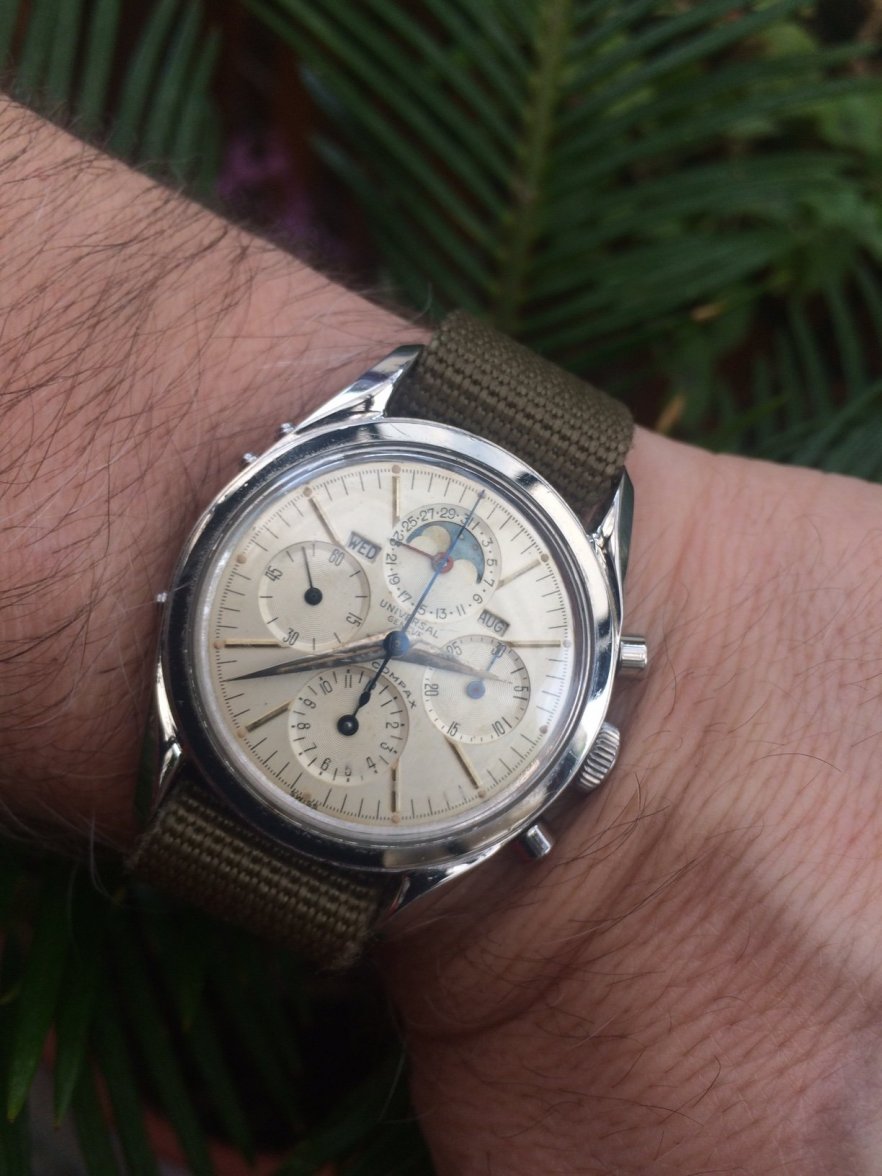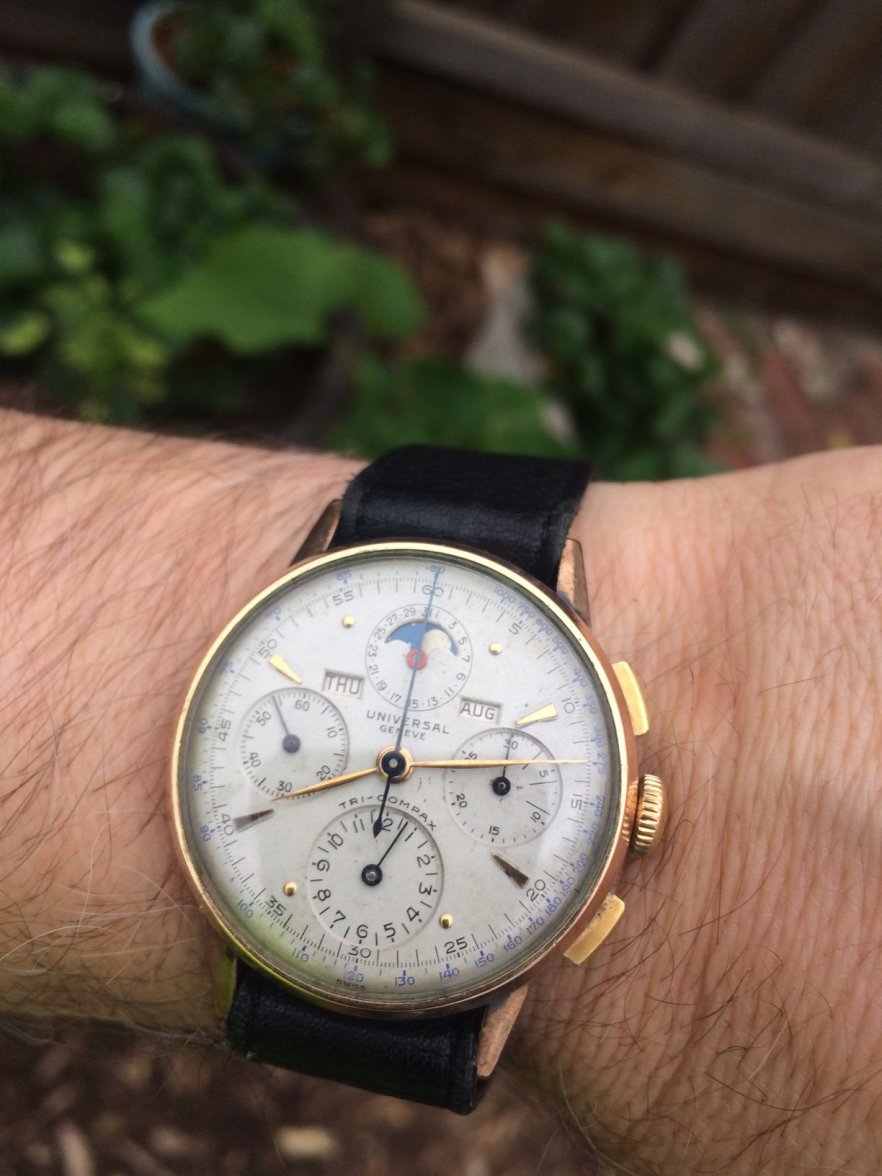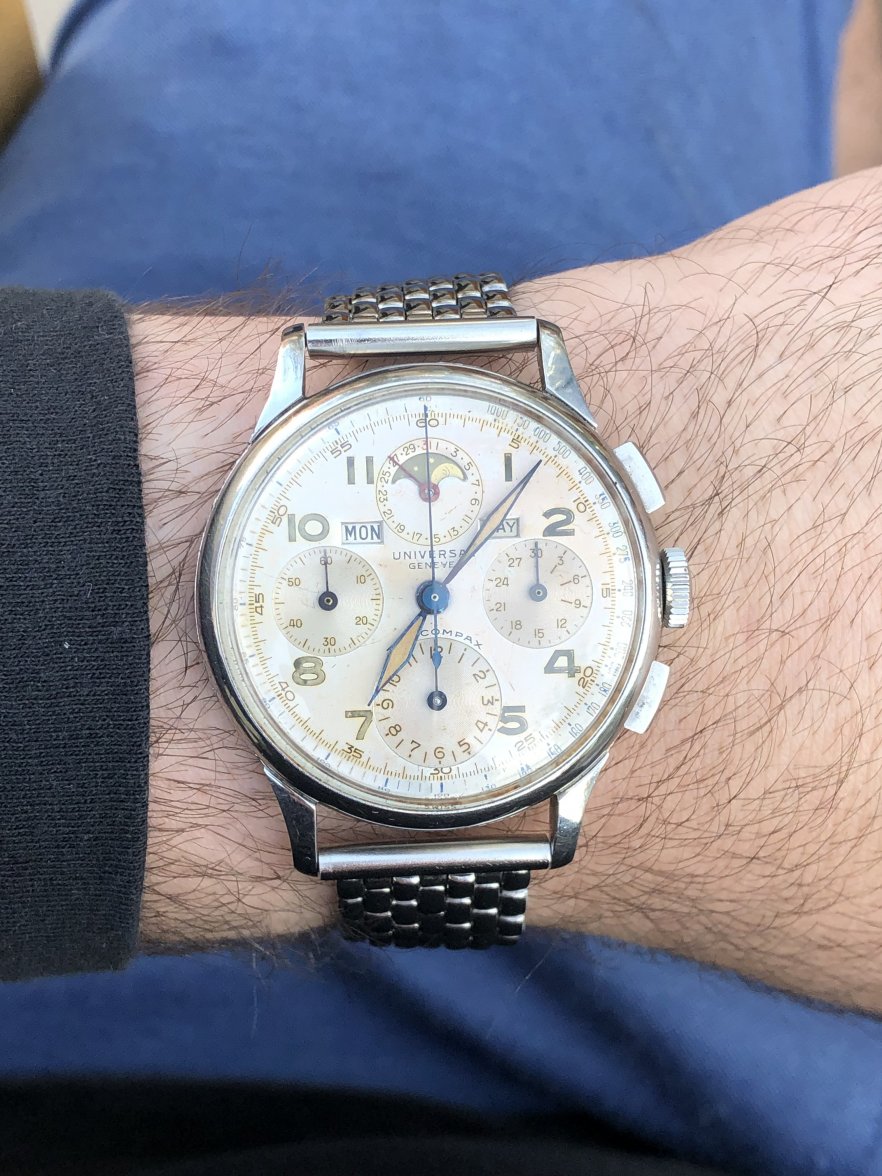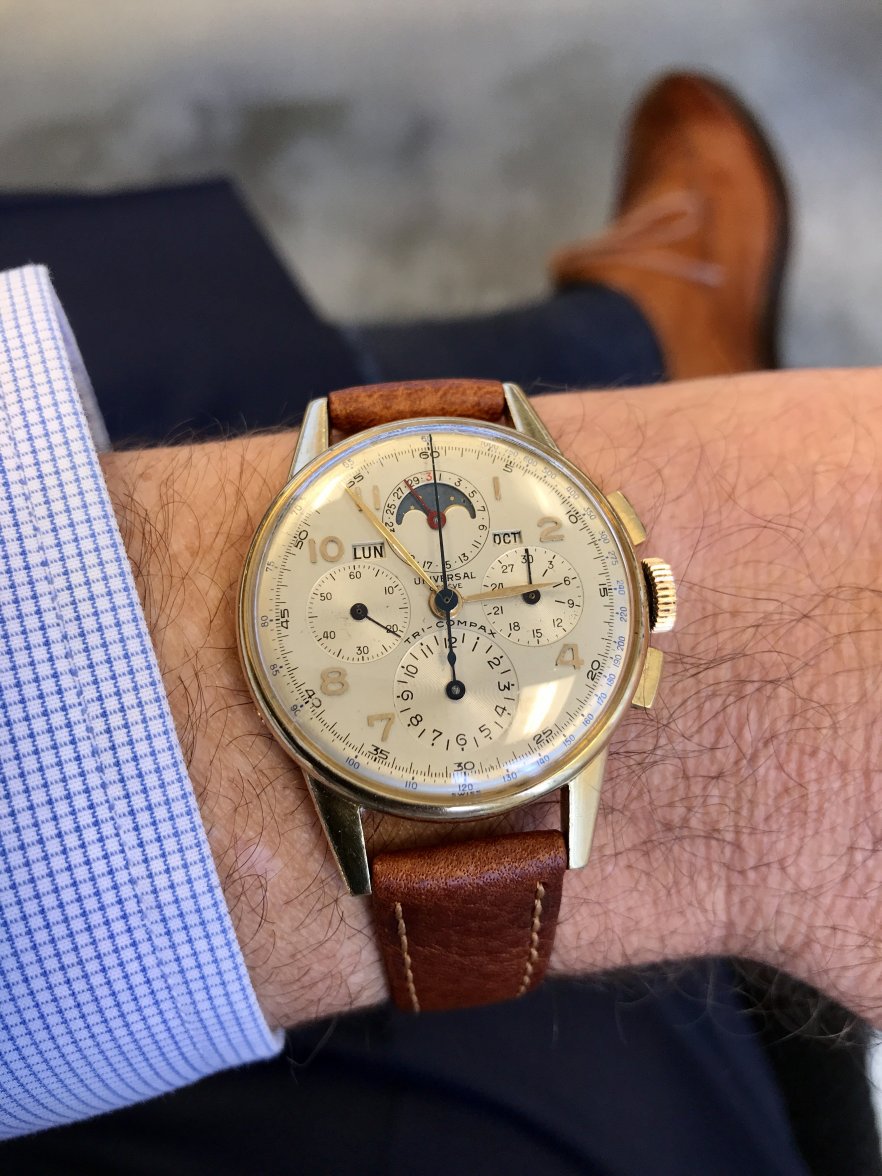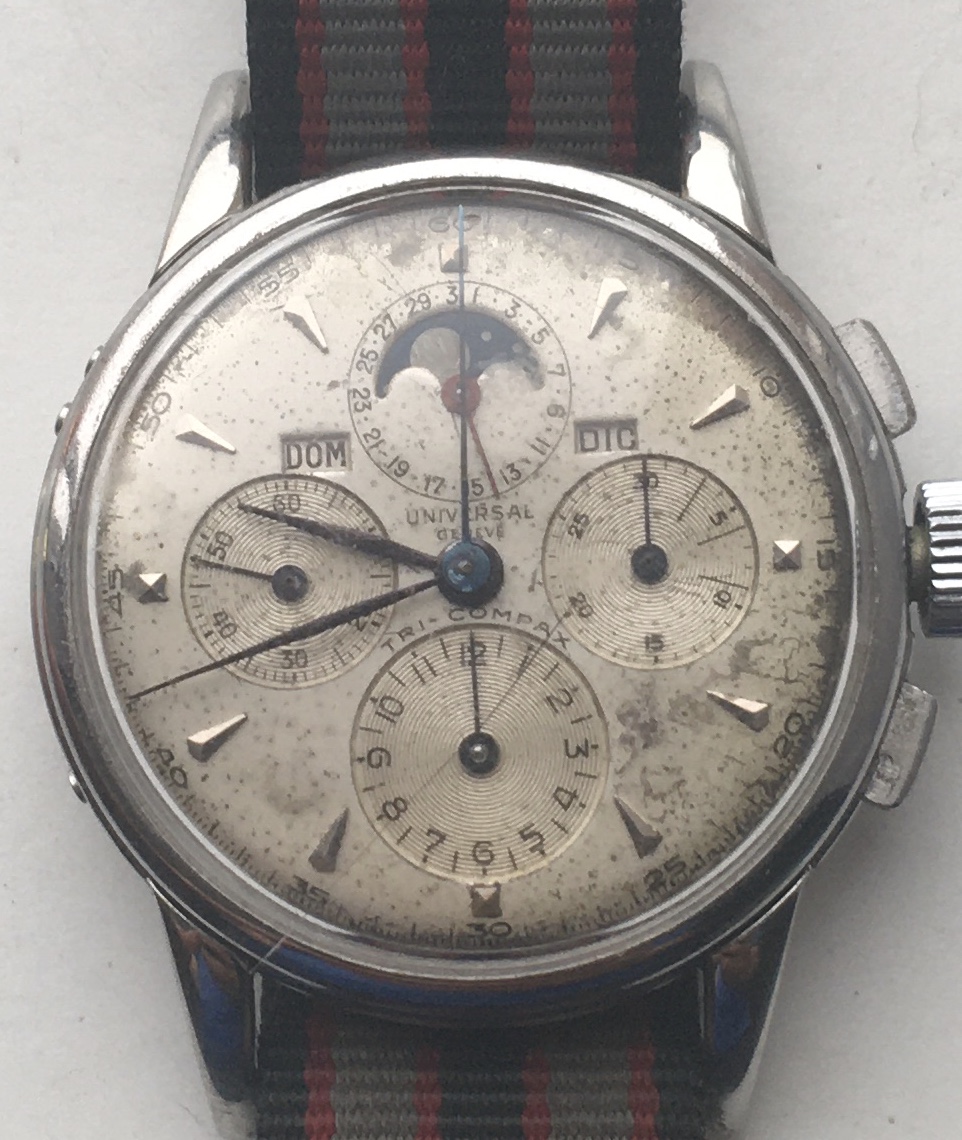Lets see your UG Tri-Compax
- Posts
- 17
- Likes
- 14
Larry S
··Color Commentator for the Hyperbole.Thanks for everyone's input/help. Got it at a price I'm very pleased with, even if everything is not 100% from the exact time period I'm psyched! Now I just gotta learn how to take as good a photo of it as you all seem to be able to hehe
rosspo
·Tempus
·Tempus
·Watches&Straps
·Congrats all 😀
- Posts
- 17
- Likes
- 14
Goldchronolove
·Nice watch....but....Definitely a later dial. Drilled lugs. Without SN, can’t know what came first. It’s put together for sure. All UG parts though so that saves it’s value somewhat. Biggest drag on value imo is the case work.
Question about case work, specifically drilled lugs. I've used this board as a reference on a bunch of different topics regarding these early UG chronographs and haven't been able to find a conversation on this subject. Browsing the web, I've come across a lot of examples of 1940s era tri compax that look pretty spot-on correct outside of the drilled lugs. Did UG ever do it? Maybe later on at a client's request? If not, any idea why so many have been adulterated in that specific way when they seem like they were left alone otherwise? I'm finding this confusing because it seems like such a minor aesthetic point when a dial/case look great otherwise, but meaningfully effects the value of the watch all the same.
Thanks!
Larry S
··Color Commentator for the Hyperbole.Question about case work, specifically drilled lugs.
Thanks!
- Posts
- 17
- Likes
- 14
Goldchronolove
·How interesting. And here I was assuming drilled lugs pre-1950 was just incorrect! If it's possible to tell, do the watches that were originally sold with drilled lugs have anything in common like case material, size, particular references? Or is "thicker and sportier" as good as it gets given the state or the reference material you're looking at?
MarktheTime
·How interesting. And here I was assuming drilled lugs pre-1950 was just incorrect! If it's possible to tell, do the watches that were originally sold with drilled lugs have anything in common like case material, size, particular references? Or is "thicker and sportier" as good as it gets given the state or the reference material you're looking at?
Larry S
··Color Commentator for the Hyperbole.I didn't notice your particular comment/question until just this morning on the lugs. For whatever it's worth, I'll note that 3 of my 4 Tri-Compax from the 1946-49 period (all with smiling moons) have male springbar holes, original to the watches (you can see the models earlier in this thread, and the latest with yesterday's post). Only my rose gold Tri has the "dreaded" female springbars. So I can concur that some of the models from this period - particular with "chunkier" lugs, did originally come with drilled holes for springbars. Let me know if you (or @Larry S ) want additional pics for any reason.
Oku
·Seems SS models were more likely to have male spring bars.
MarktheTime
·the 1940ies were a poor time and gold was expensive. So case makers tried to reduce the gold of the cases to make them cheaper. That makes cases thinner, lugs are not solid. And as gold is soft, male lugs and female springbars are needed.
Oku
·As I said: To make the case more stable, often male lugs and female springbars are used. That doesn't mean that all the watches from that era have them. In fact, many have not.
But look at the cases of that era. Many are very thin. For example the UG uni compax 124103 has a very thin case and male lugs.
But look at the cases of that era. Many are very thin. For example the UG uni compax 124103 has a very thin case and male lugs.
